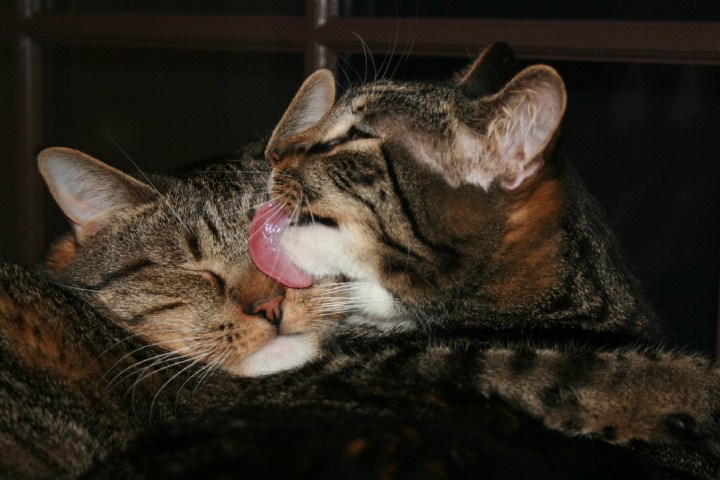
That is the case with the humble hairbrush, which was first patented in 1854 as “ornamental design for a hairbrush,” and still retains the same broad design with long handle and scalloped edges more than a century and a half later.
Things might be about to change, though — and if they do, you can thank Alexis Noel, a doctoral candidate in the Hu Biolocomotion Lab at the Georgia Institute of Technology College of Engineering, and her 3D-printed cat’s tongue.
“I’ve been studying cats for around six months, looking specifically at their tongues,” Noel said. “I was inspired by my own cat, who I noticed licking a blanket and getting his tongue stuck. It was the silliest thing, but it made me start thinking as a scientist about what was actually going on on the surface of the tongue’s soft tissue.”

As it happens, cat tongues are covered in tiny, sharp “spines” a bit like Velcro, which prove very effective for catching snags. Noel described them as a “heat-seeking missile” for tangles. “They allow a cat to grab just about anything in its fur — whether that’s detangling it, grabbing fleas, or getting rid of particulates,” she said.
Noel proceeded to create a 3D-printed cat tongue, around four times the size of an actual cat tongue. This was comprised of miniature spines embedded in a soft silicone substrate. She compared its effectiveness on a “grooming machine” that she had also developed, and found that it worked far more effectively than regular hairbrushes.
At present, she has filed a provisional patent and is hoping to start working developing an actual hairdressing product over the coming months.
Hairbrushes are not the only possible application, though. “This is nature’s way of figuring out how to groom and grab,” she explained. “There’s a lot you could do with it.”
One other possible use-case could be for cleaning wounds in the medical field. Another potentially transformative application would involve the exciting field of soft robotics.
“Having something which is soft but can conform to a very irregular surface, and grab it at the same time, has a lot of interesting avenues,” she noted. “This could help answer questions like how to get robots to pick up fragile objects without damaging them, or helping robots to climb walls. You can imagine this potentially being used for a possible future Mars robot, to get particulate off a surface very quickly and efficiently.”


